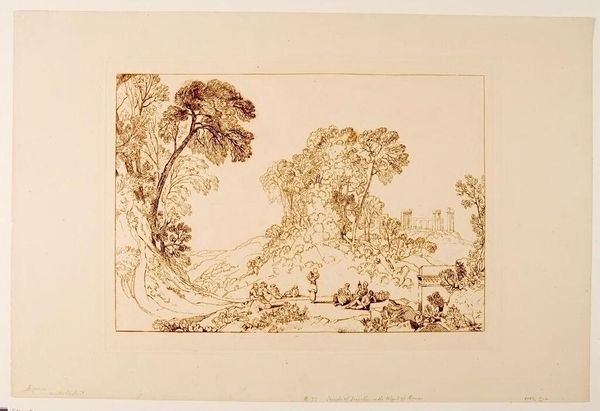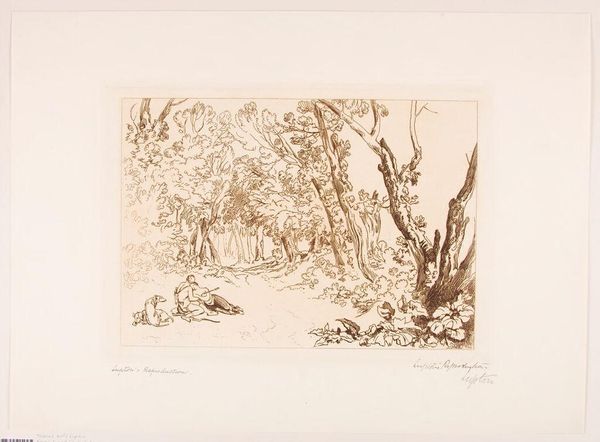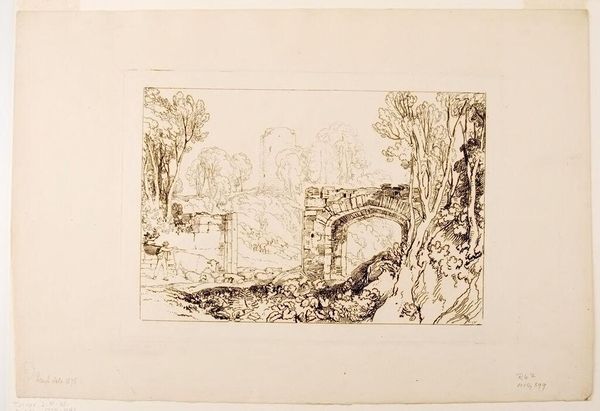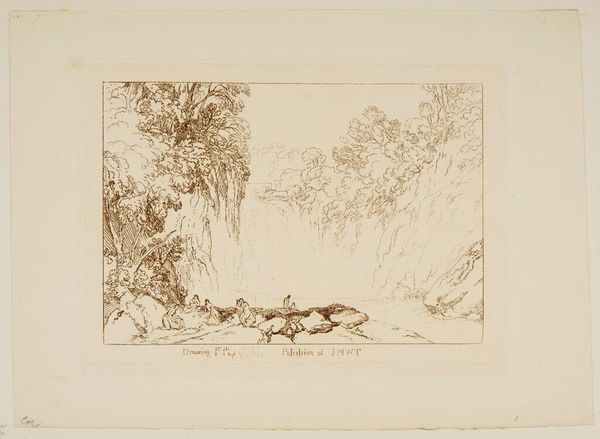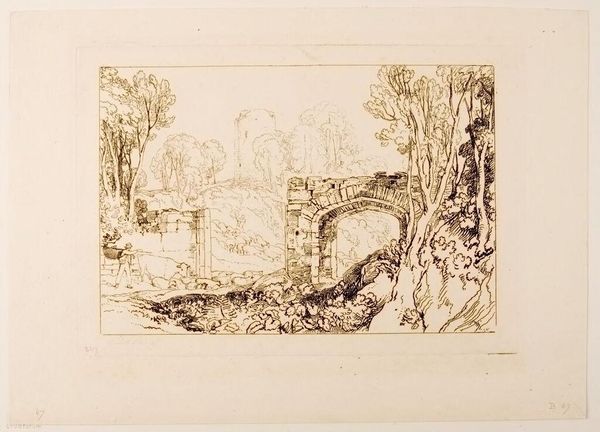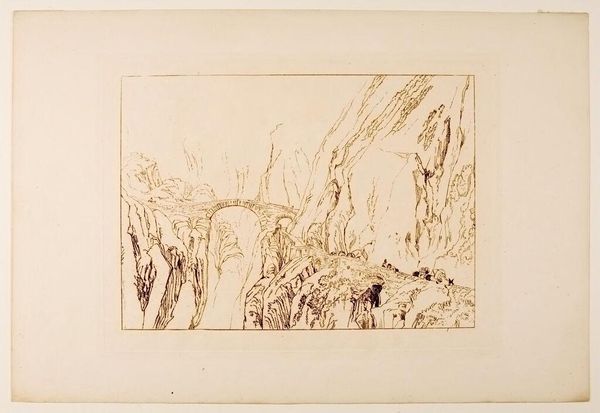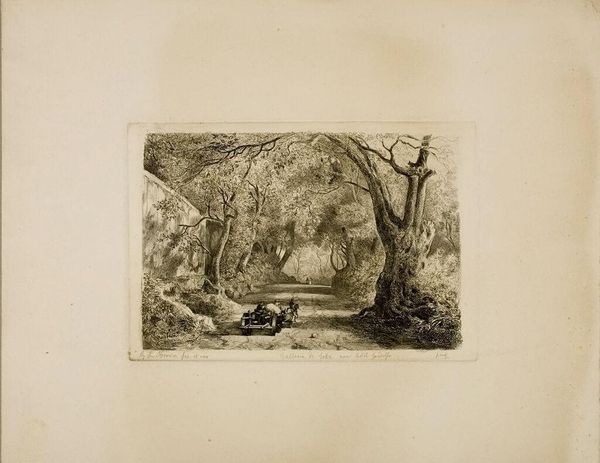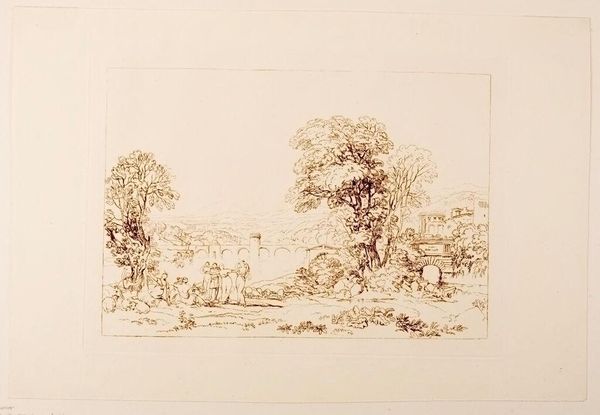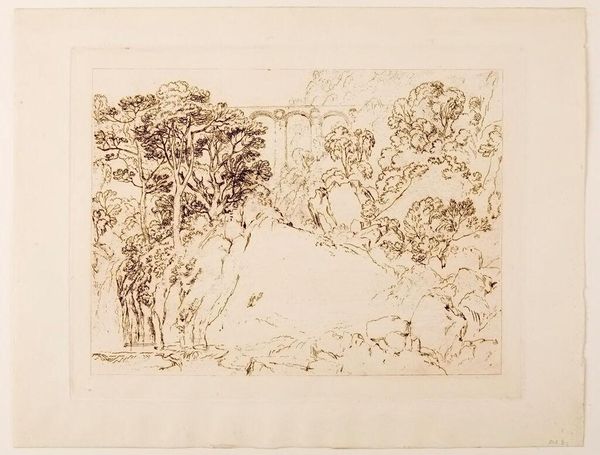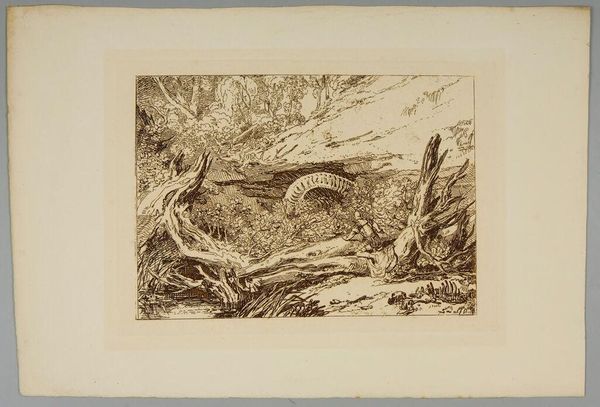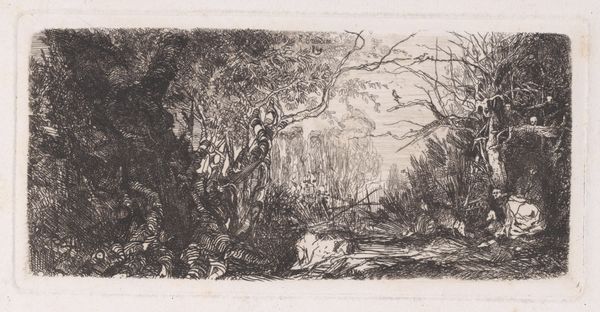
Copyright: CC0 1.0
Curator: Turner's etching, Procris and Cephalus, presents a scene of domestic tragedy within a serene woodland setting. Editor: The first thing I notice is the stillness. Despite the implied narrative, there's a remarkable sense of peace conveyed by the composition. Curator: Turner was drawn to classical mythology as a vehicle to explore complex emotional and moral issues, often reflecting contemporary anxieties about gender roles and relationships. Editor: Yes, and the dog at Cephalus's feet, a common symbol of fidelity, seems to mock the tragic circumstances of Procris’s death by his hand. It becomes a bitter irony. Curator: Absolutely. The seemingly idyllic landscape becomes a stage for betrayal and accidental violence, reflecting the precariousness of trust and love. Editor: That shadow of violence disrupts the pastoral idyll, turning it into a potent, if subtle, commentary. Curator: A fitting reminder of how art can expose the underlying tensions within seemingly harmonious narratives. Editor: Indeed, it is a powerful visual exploration of how easily beauty can coexist with tragedy.
Comments
No comments
Be the first to comment and join the conversation on the ultimate creative platform.
